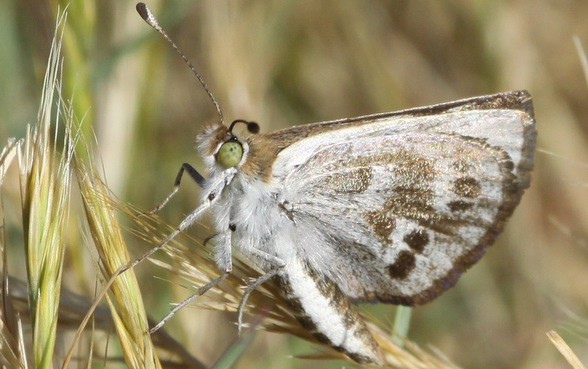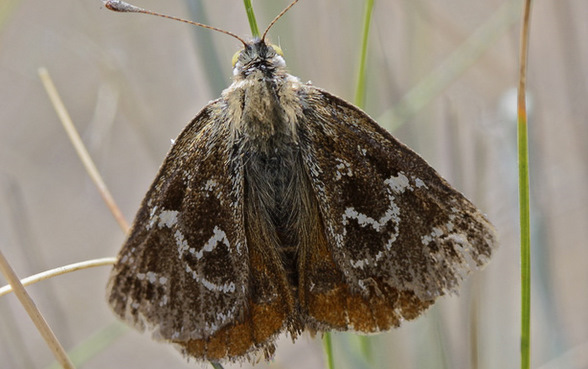Behaviour
Diet
The larva (caterpillar) feeds on the roots of native grasses, particularly wallaby grasses. The moth has no functional mouthparts and doesn’t eat at all.
Movement
The female rarely flies, unless it is disturbed, and tends to walk between tussocks of grass to lay eggs. The male spends its entire life flying, searching for females to mate with. It flies during the hottest part of bright sunny days, for about 6 – 8 weeks from November to January.
Flight
The male flies in a zig-zag pattern about one metre above the ground. The female has a smaller hindwing and is a very poor flyer.
Breeding
Adult moths continuously emerge from underground tunnels throughout the flying season. The females possess fully developed eggs that are waiting to be fertilised by the male, and attract the males that are flying overhead by flashing their orange hindwings. After mating, the female lays up to 200 eggs at the base of wallaby grass tussocks. The eggs hatch after about 21 days and the larvae (caterpillars) then tunnel into the ground, where they live for one to three years. Adult moths live for only one to five days as they cannot eat.
Field Guide
Improve your identification skills. Download your Golden Sun Moth field guide here!





